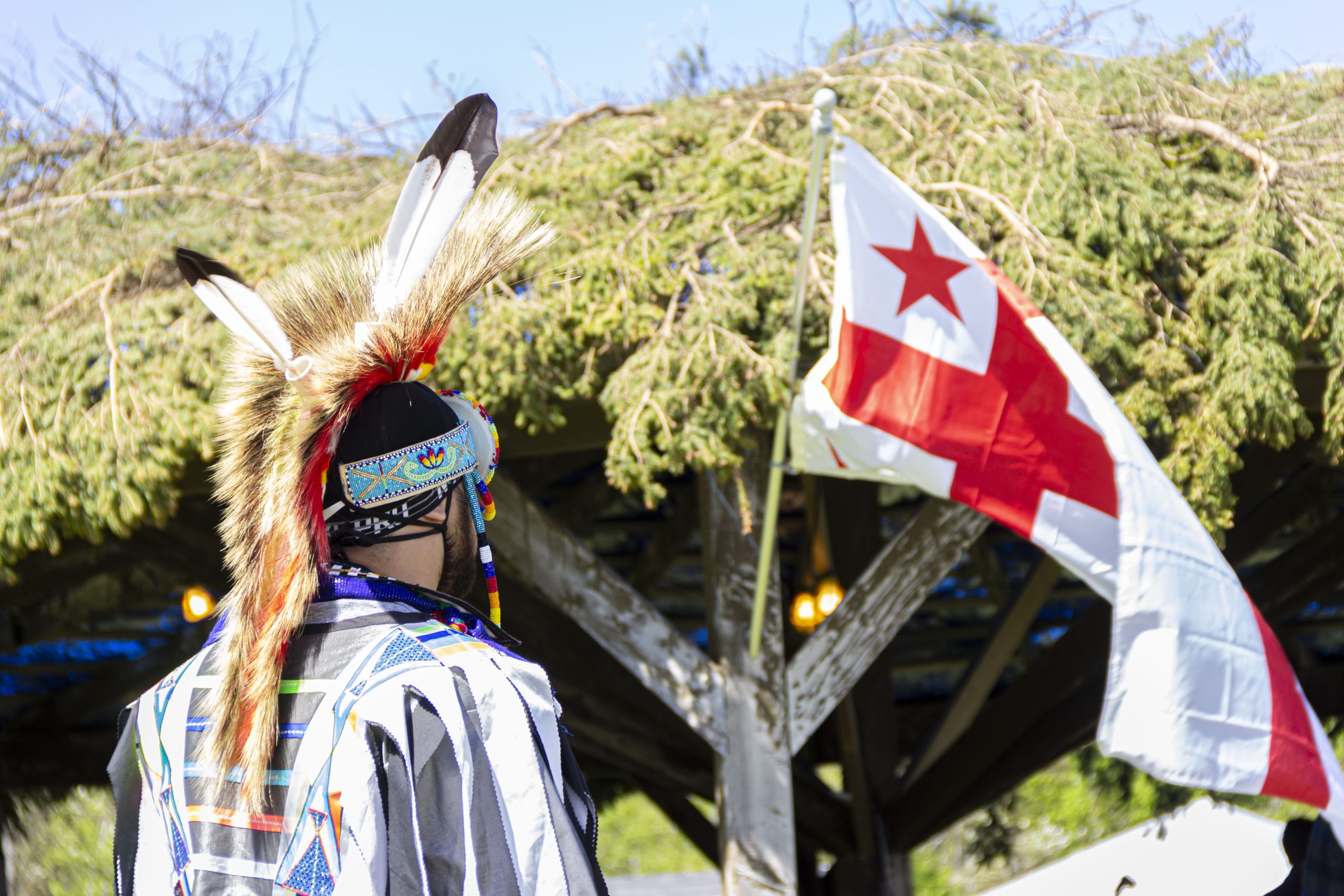Section 2 : Southern Door ~ Learning with Open Heart and Mind
Chapter 12: Honouring Msit No’kmaq ~ Wahkohtowin ~ All Our Relations and Closing of Circle
Topics at a Glance
- Closing the Learning Circle
- Final Words
Closing the Learning Circle
Our learning journey together is now coming to a close, and as we enter this last phase, we’ll do this ceremonially. I always begin the closing of the learning circle with a warm welcome, a sacred smudging ceremony, and then a song. Let us first take a moment to honour the ancestors and relations, and particularly the L’nu and their lands, as none of this would be possible without them (see Figure 54).
Figure 54
Honouring the L’nu and their lands

I will ask that you remain standing as we hear the Honour Song as performed by Ms. Janey-Lynn Perrier of the Qalipu First Nation, Newfoundland, and UPEI Class of 2024 for the Winter 2024 Health, Healing, and Wellness course.
Videography credit: Austin Campbell, a member of Algonquins of Pikwakanagan First Nation, Ontario.
Wela’lin, hai hai, and thank you, Janey, for your beautiful singing of the Honour Song. It was so powerfully moving as you honoured your own Mi’kmaq (Qalipu First Nation, Newfoundland) ancestry during my course, and you have now received your BA in Music and a Minor in Indigenous Studies (May 2024). And, as always, to all my students — I extend a huge thank you for being part of this important learning journey.
Do you remember the words of the late Indigenous writer, Richard Wagamese, that were presented at the beginning of our journey in Chapter 2? Several times in this textbook, I’ve also mentioned his thoughts on learning, knowledge, and wisdom. He wrote:
“Knowledge is not wisdom. But wisdom is knowledge in action. I have lived most of my years immersed in the culture of books. I command a lot of facts. I comprehend a lot of concepts. That does not make me wise or even intelligent. It just indicates what I have memorized. But when I activate those facts and concepts to find the greatest, grandest version of myself, and then use them to work toward that version, I begin the process of wisdom. The most essential question to ask myself is not ‘What do I think about this?’ but rather ‘How do I feel about this?’ In such simplicity is greatness made possible for an individual, a society and a human family.”
-Richard Wagamese (Embers: One Ojibway’s Meditations)
- What do you think Richard is saying? Does it make better sense now after our learning journey?
- What does this mean for your continued learning?
- What action is required of you going forward?
So, how do you feel about this?
I take the sacred feather and pass it around the circle, so each of us has an opportunity to speak and share what thoughts come to mind as we close our learning circle. This is such an important teaching, in and of itself. Before I pass the feather, I thank each of you for making this class so very special.
As the session comes to a close, I draw your attention to a series of images of an Indigenous youth theatrical performance troupe, formerly known as the 2011 Confederation Centre for the Arts Young Company. During the summer of 2011, they performed The Talking Stick. However, prior to their season beginning, they performed for Their Royal Highnesses, The Duke and Duchess of Cambridge, Prince William and Kate Middleton, during their royal visit to Prince Edward Island (see Figure 55).
Figure 55
The Talking Stick Confederation Centre for the Arts Young Company, Charlottetown, PEI
Photo Credit: Georgia and East Coast Photography
I present one final video that I hope encapsulates what this course has been trying to do; while the video quality is not great, the audio is. The song performance is by Jacob MacInnis of the 2011 Confederation Centre for the Arts Young Company. The Talking Stick was a production of the late Cathy Elliott of Sipekne’katik First Nation, Nova Scotia, who tragically lost her life after being struck by a vehicle in 2017. Recall that 2017 was an important year in education across our country. Cathy devoted her life to education, theatre, and working with students. She had been engaged with a group of students from Sheridan College in Ontario when she left the physical world. She will be with many of us spiritually for a very long time, and her work lives on in future generations.
Seven Generations Work of Healing and Reconciliation in one Song
Final Words
As we end the term, I offer you my final words from this chapter: I wish you well in your professional and personal journey. You have learned much about Indigenous peoples, along with Indigenous and non-Indigenous relations in Canada and across Turtle Island. You have begun the work of the Truth and Reconciliation Commission’s Calls to Action by taking this course, and you are still in the reflection and writing mode.
I have been doing my own reflection to correspond with your reflective work, and this can be found in the next section of the textbook, “Section 3: Western Door ~ Relational Knowing and Honouring, Calls to Action, and Change.” I also have some closing words for this textbook to say in “Section 4: Northern Door ~ Reconciliation and Responsible Citizenship.”
It is my hope that you will continue to be engaged with the concept of relational knowing and honouring, your own calls to action, and responsible citizenship. I know you will, as this is not easy to forget. Once out there, it cannot be taken back. Interestingly, it may only come back months and years later — but it will come back.
Msit No’kmaq ~ Wahkohtowin ~ All our Relations.
References
Wagamese, R. (2016). Embers: One Ojibway’s Meditations. D & M Publishers.

